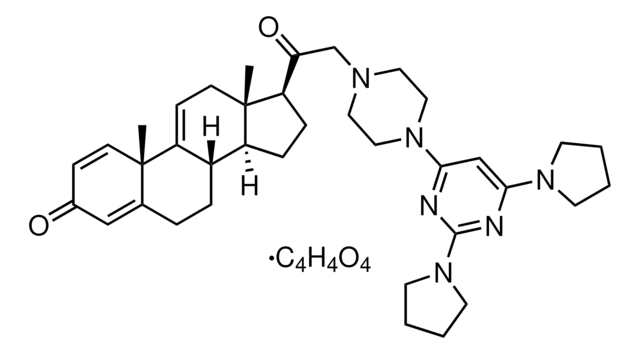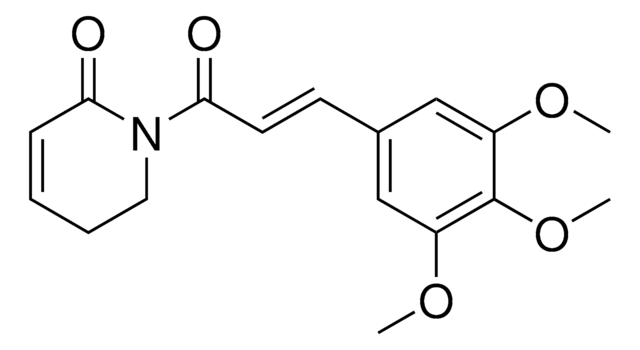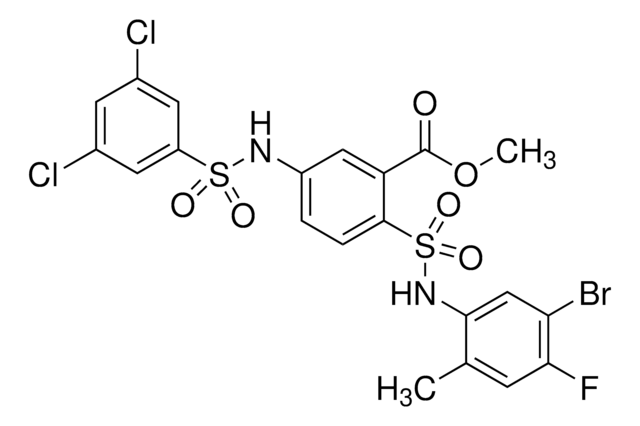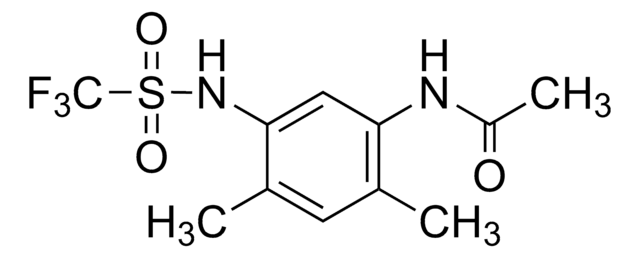Q4990
QBP1
≥95% (HPLC)
동의어(들):
L-Seryl-L-asparaginyl-L-tryptophyl-L-lysyl-L-tryptophyl-L-tryptophyl-L-prolylglycyl-L-isoleucyl-L-phenylalanyl-L-aspartic acid trifluoroacetate salt
크기 선택
크기 선택
About This Item
추천 제품
분석
≥95% (HPLC)
양식
powder
색상
white
solubility
H2O: >1 mg/mL
저장 온도
−20°C
SMILES string
OC(=O)C(F)(F)F.CC[C@H](C)[C@H](NC(=O)CNC(=O)[C@@H]1CCCN1C(=O)[C@H](Cc2c[nH]c3ccccc23)NC(=O)[C@H](Cc4c[nH]c5ccccc45)NC(=O)[C@H](CCCCN)NC(=O)[C@H](Cc6c[nH]c7ccccc67)NC(=O)[C@H](CC(N)=O)NC(=O)[C@@H](N)CO)C(=O)N[C@@H](Cc8ccccc8)C(=O)N[C@@H](CC(O)=O)C(O)=O
InChI
1S/C72H90N16O16.C2HF3O2/c1-3-39(2)62(70(101)84-52(28-40-16-5-4-6-17-40)65(96)86-57(72(103)104)33-61(92)93)87-60(91)37-79-69(100)58-25-15-27-88(58)71(102)56(31-43-36-78-50-23-12-9-20-46(43)50)85-67(98)54(30-42-35-77-49-22-11-8-19-45(42)49)82-64(95)51(24-13-14-26-73)80-66(97)53(29-41-34-76-48-21-10-7-18-44(41)48)83-68(99)55(32-59(75)90)81-63(94)47(74)38-89;3-2(4,5)1(6)7/h4-12,16-23,34-36,39,47,51-58,62,76-78,89H,3,13-15,24-33,37-38,73-74H2,1-2H3,(H2,75,90)(H,79,100)(H,80,97)(H,81,94)(H,82,95)(H,83,99)(H,84,101)(H,85,98)(H,86,96)(H,87,91)(H,92,93)(H,103,104);(H,6,7)/t39-,47-,51-,52-,53-,54-,55-,56-,57-,58-,62-;/m0./s1
InChI key
VSUBSHMCMRUEAG-IQVZWRNHSA-N
애플리케이션
생화학적/생리학적 작용
Storage Class Code
11 - Combustible Solids
WGK
WGK 2
Flash Point (°F)
Not applicable
Flash Point (°C)
Not applicable
가장 최신 버전 중 하나를 선택하세요:
활성 필터
자사의 과학자팀은 생명 과학, 재료 과학, 화학 합성, 크로마토그래피, 분석 및 기타 많은 영역을 포함한 모든 과학 분야에 경험이 있습니다..
고객지원팀으로 연락바랍니다.








